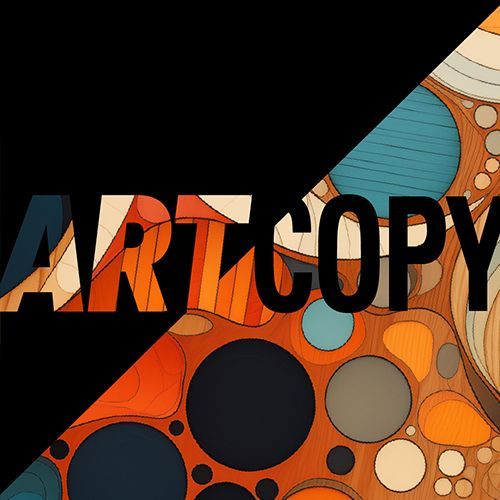Why Every Brand Needs Generative AI Rules for Their Visual Identity Guide
Generative AI has revolutionized content creation by automating processes that once took designers and creatives hours or even days. While this technology can be a game-changer, especially for brands, it introduces potential risks regarding brand consistency, compliance, and legal exposure. To harness the power of AI-generated visuals while protecting a brand’s integrity, establishing and adhering to AI brand guidelines is critical.
Why Visual Guidelines are Essential for Generative AI
Generative AI (GenAI) can output content rapidly, but without clear boundaries, AI could deviate from brand standards. The importance of visual brand guidelines cannot be overstated in these contexts:
- Consistency in Brand Identity: Ensuring that logos, color schemes, fonts, and design elements align with a brand’s identity is key.
- Avoiding Brand Dilution: Without strict guidelines, inconsistent or inappropriate visuals can weaken the brand’s positioning in the market.
- Mitigating Legal Risks: Poorly controlled AI-generated content can infringe on copyrights, use inappropriate imagery, or be culturally insensitive, exposing the brand to legal liabilities.
Best Practices for Ensuring Brand Compliance with Generative AI
1. Establish Clear and Detailed Visual Guidelines
Every aspect of your brand’s visual identity should be outlined in a comprehensive guideline document. This will help train the AI to operate within established parameters. Include elements such as:
- Logos: Define acceptable variations (color, size, positioning) and where they can be placed.
- Color Palettes: Specify primary, secondary, and accent colors, and ensure the AI adheres to those specifications.
- Typography: Include approved fonts, font weights, and when and how they should be used.
- Imagery and Iconography: Outline acceptable types of images, style (e.g., minimalist, abstract, realistic), and icons that align with brand standards.
Pro Tip: Create visual examples that illustrate the correct and incorrect usage of each brand element, so the AI can recognize what’s appropriate. Start with your existing brand guidelines if they are up-to-date and accurately reflect your brand.
2. Train AI Models Using Brand-Specific Data
Generative AI relies heavily on the data it’s trained on. For best results:
- Feed the AI model brand-compliant visuals, from social media posts to web banners, ensuring it understands your brand’s aesthetics.
- Include metadata and tags with clear explanations of why certain images or designs are chosen, helping the AI understand the context.
- Update training data frequently to ensure the AI reflects any changes in your brand guidelines or design trends.
Pro Tip: Set up a feedback process where AI-generated content is reviewed and rated by human designers. This feedback will further refine the AI’s ability to produce on-brand content.
3. Implement AI Review and Approval Processes
If we’re learned anything from
Arthur C. Clarke's Space Odyssey series Generative AI should not autonomously deploy content without human oversight. To ensure brand compliance and mitigate risk:
- Content Review: Establish an approval workflow where AI-generated visuals are reviewed by brand or creative teams before publication.
- Tiered Approval Levels: Depending on the sensitivity of the content, you might have multiple levels of review, including legal teams for any potentially risky or copyright-infringing designs.
Pro Tip: Use AI in conjunction with design tools that offer brand compliance checks, ensuring that content remains within pre-defined parameters before it is ever reviewed by humans.
4. Address Intellectual Property (IP) and Copyright Issues
Stay on top of potential copyright violations. AI-generated visuals could inadvertently use or mimic copyrighted materials. To protect your brand:
- Incorporate copyright checks in the AI’s content creation process to flag any potentially infringing material.
- Work closely with legal counsel to develop a policy for handling AI-generated content that might overlap with existing copyrighted works.
- Include disclaimers in your brand guidelines about the acceptable sources of inspiration and what constitutes acceptable derivation versus copyright infringement.
Pro Tip: Develop a system for tracking the origins of AI-generated visuals, so your brand can prove the uniqueness of its content if challenged.
5. Define Ethical and Cultural Sensitivity Guidelines
One of the biggest risks with Generative AI is the potential for producing content that’s culturally insensitive or offensive, which can damage a brand’s reputation. To avoid this:
- Train the AI using inclusive and diverse data sets to prevent biased or offensive imagery.
- Establish guidelines around appropriate visual representations of people, gender roles, ethnicities, and cultures. AI should avoid stereotypes and embrace inclusive representation.
Pro Tip: Regularly audit AI-generated content for cultural appropriateness, especially if your brand operates in multiple regions with distinct cultural norms.
6. Regularly Update and Adapt Guidelines
As AI technology advances, so too should your brand guidelines. An agile approach to updating your visual guidelines ensures you’re always ahead of potential risks and opportunities:
- Schedule quarterly or biannual reviews of your brand guidelines.
- Involve key stakeholders from marketing, design, and legal teams in these updates to ensure all angles are considered.
- Update the AI training data to reflect new campaigns, brand positioning, or shifts in visual trends.
Pro Tip: Make it easy for team members to access updated guidelines by using digital brand management tools, where updates can be rolled out seamlessly across teams and AI systems.
7. Monitor and Evaluate AI Performance:
It’s crucial to regularly evaluate how well AI-generated content aligns with brand guidelines. This involves:
- Analyzing whether AI-generated visuals meet brand standards in live campaigns.
- Collecting performance data, including feedback from creative teams and end-users, to measure the success of AI-generated content.
Pro Tip: Use performance metrics (e.g., engagement rates, brand recall, or sales impact) to measure the efficacy of AI-generated content in adhering to and enhancing brand identity.
Generative AI offers unprecedented opportunities for efficiency and creativity in visual expression, but without clear guidelines, it can easily veer off course, putting your brand reputation at risk. By implementing comprehensive AI usage guidelines, regularly training AI models, and instituting review processes, brands can ensure compliance, consistency, and creativity — while mitigating the inherent legal and reputational risks. Generative AI is only as good as the humans that guide and direct it. AI is not a creative autopilot, use these best practices offer a roadmap for ensuring your brand stays on course in the AI-driven future.
If you found this article useful, and would like to learn more about incorporating AI into your marketing department’s toolset, schedule a free AI consultation.




